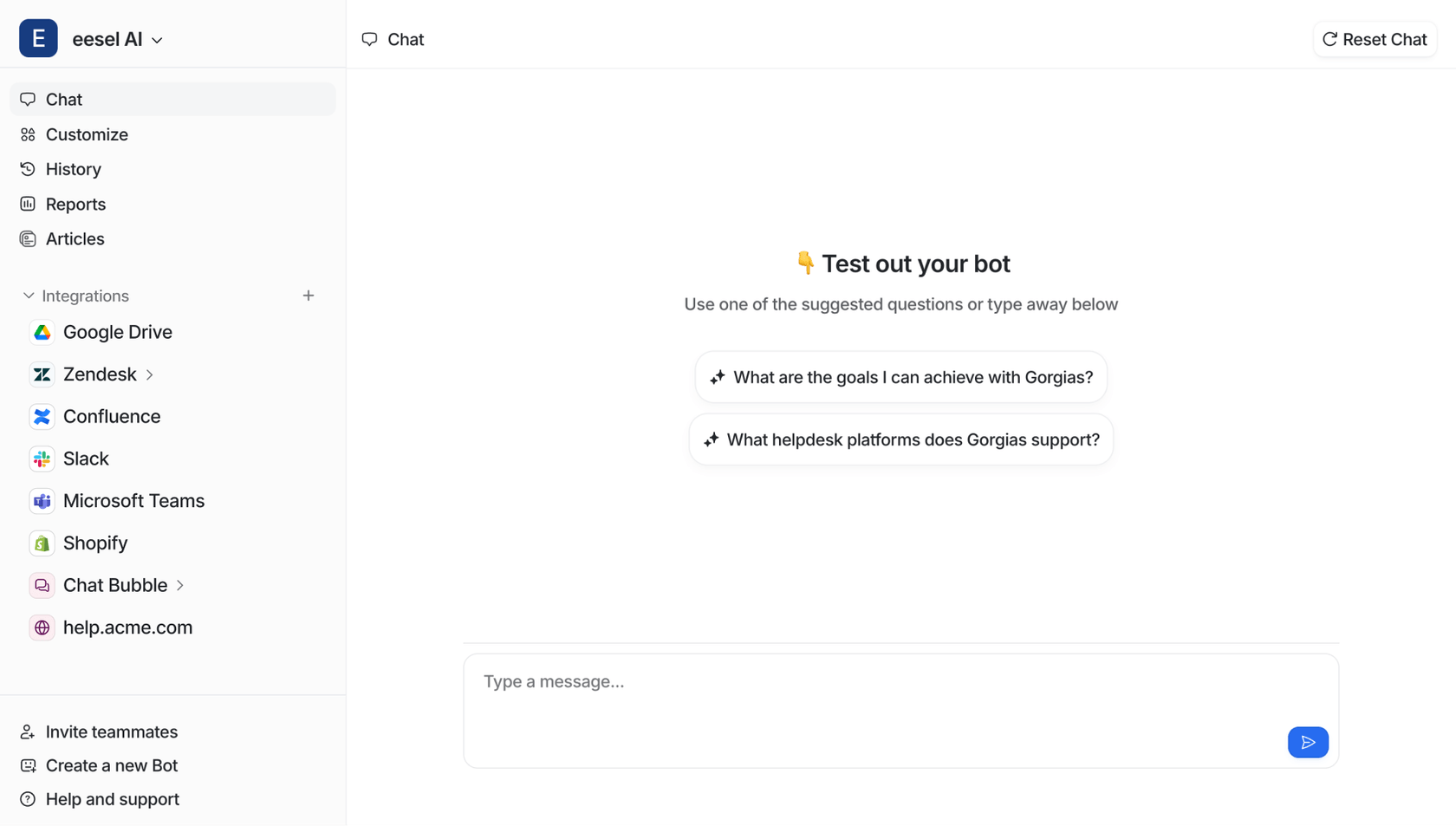
If you work in IT, you’ve probably come across Jira Service Management (JSM). It’s a popular choice for teams trying to get a handle on service requests, deal with incidents, and generally keep things from catching fire. But while the tool itself is pretty powerful, figuring out the Jira Service Management pricing can feel like you’re trying to solve a puzzle with half the pieces missing.
It’s not just about the cost per agent. The real price is often buried in different plans, extra fees, and packaging limits that can sneak up on you. This guide is here to lay all the pieces on the table. We’ll walk through each plan, point out the hidden costs, and give you a straightforward look at what you’re actually paying for. By the end, you’ll know if JSM fits your team and your budget.
What is Jira Service Management?
At its heart, Jira Service Management is an IT Service Management (ITSM) tool from Atlassian that’s built right on top of the Jira platform you might already know. Its main purpose is to give IT, ops, and business teams one spot to manage everything from a simple "I need a new mouse" request to a full-blown "The website is down!" emergency.
It’s set up to help teams follow standard ITSM practices for incidents, problems, and changes. But it’s flexible, so it’s not just for IT anymore. Lots of companies use it to set up service desks for other departments like HR, legal, or facilities, making it the go-to place for all kinds of internal support.
Breaking down the Jira Service Management pricing plans
Jira Service Management has four main cloud plans, each built for different kinds of teams. The price is based on how many agents you have per month, but it’s not a flat fee. The average cost per agent actually goes down as your team gets bigger, which is a nice perk for larger companies.
| Feature | Free Plan | Standard Plan | Premium Plan | Enterprise Plan |
|---|---|---|---|---|
| Cost | $0 | ~$19.04 / agent / month | ~$47.82 / agent / month | Custom (Annual Billing) |
| Target Audience | Startups, small teams | Small to mid-sized teams | Mature ITSM & DevOps teams | Large, complex organizations |
| Agent Limit | Up to 3 agents | Up to 20,000 agents | Up to 20,000 agents | Up to 20,000 agents per site |
| Storage | 2 GB | 250 GB | Unlimited | Unlimited |
| Key Features | Ticketing system, self-service portal, basic knowledge base | Audit logs, data residency, on-call scheduling | Asset management, advanced change management, AI features | Multi-site management, Atlassian Guard, Atlassian Analytics |
| Support | Community support | Standard support | 24/7 Premium support | 24/7 Enterprise support |
| Uptime SLA | None | None | 99.9% | 99.95% |
Let’s take a closer look at what each plan offers.
The Free plan: A starting point for small teams
The Free plan is exactly what it sounds like: a no-cost way to get started with JSM.
-
Cost: $0, but you’re limited to 3 agents.
-
Who it’s for: This is a great option for startups or small teams just dipping their toes into ITSM. It’s a risk-free way to see if the platform works for you without pulling out a credit card.
-
What you get: You get the essentials, like a ticketing system, a self-service portal for users, and a basic knowledge base.
-
The catch: The limits are pretty tight. You only get those 3 agents, 2 GB of file storage, and 100 email notifications a day. For support, you have to rely on the Atlassian Community forums, so you’re mostly on your own. Most importantly, you don’t get any of the advanced stuff like asset management or AI.
The Standard plan: For growing teams that need more
Once you’ve outgrown the Free plan, the Standard plan is the logical next step.
-
Cost: It starts at around $19.04 per agent, per month.
-
Who it’s for: This plan works well for small to mid-sized teams that need more than three agents and a bit more power to handle their workload.
-
What you get: You get everything from the Free plan, but with higher limits. You can have up to 20,000 agents, you get 250 GB of storage, and you unlock features like audit logs, data residency controls, and on-call scheduling for your incident response team.
-
The catch: It’s a decent jump up, but the Standard plan is still missing some key ITSM features. You won’t find asset and configuration management (CMDB) or advanced incident workflows. And the AI features that really help with efficiency are nowhere to be found, which can become a real problem as your team scales.
The Premium plan: The all-in-one option
The Premium plan is where JSM starts to feel like a complete tool for serious ITSM.
-
Cost: The price jumps to about $47.82 per agent, per month, more than double the Standard plan.
-
Who it’s for: This one is for mature ITSM and DevOps teams that rely on advanced features, can’t afford downtime, and need 24/7 support.
-
What you get: Atlassian pulls out all the stops here. You get powerful asset and configuration management, advanced change management tools for CI/CD pipelines, and all of Atlassian’s AI features, including a virtual agent. You also get unlimited storage and a 99.9% uptime SLA.
-
The catch: This is where the pricing gets a bit murky. The AI virtual agent and asset tracking are priced based on usage, which can lead to some unpredictable costs. We’ll get into that in a minute.
The Enterprise plan: For large, complex companies
The Enterprise plan is for the big leagues.
-
Cost: You have to talk to their sales team for a custom price, but it’s billed annually and usually starts in the six-figure range.
-
Who it’s for: This is for massive organizations that need to run multiple, separate JSM instances but manage them all under one umbrella with centralized controls.
-
What you get: It has everything in the Premium plan, plus features built for scale. You can manage up to 150 different sites, and it comes with Atlassian Guard for enterprise-level security like SSO. It also has a slightly better 99.95% uptime SLA and includes Atlassian Analytics for pulling insights across different products.
The hidden costs: What’s not on the pricing page?
That per-agent price you see on the website is just the starting point. The total cost of using Jira Service Management can climb much higher once you start adding in features that are sold separately or have usage-based fees.
Usage-based fees for important features
On the Premium and Enterprise plans, Atlassian switches to a pay-as-you-go model for two of its most useful features: Assets and the Virtual Service Agent. After you use up your free monthly allowance, you start getting charged for every extra bit you use.
-
Assets: You can track your first 50,000 objects (laptops, software licenses, etc.) for free. After that, it’s a monthly fee for each additional object.
-
Virtual Service Agent: You get 1,000 "assisted conversations" per month for free. Every chat after that costs you.
The big problem here is that it makes your bills unpredictable. As your company grows, you’ll naturally have more assets to track and more support chats for your AI to handle. This makes it incredibly hard to budget, since your costs could swing wildly from one month to the next.
This is different from how modern AI platforms like eesel AI work. With transparent, predictable pricing, you know exactly what you’re paying each month. No surprise bills after a busy quarter. The price is just the price.
Paying extra for basic security (SSO)
Let’s be real, Single Sign-On (SSO) isn’t a luxury these days; it’s a basic security need. But JSM doesn’t include it in the Standard or Premium plans. To get SSO and centralized user provisioning (SCIM), you have to buy a separate subscription to Atlassian Guard. That means adding another product and another line item to your budget just to get what many consider a standard security feature.
The real cost of a knowledge base
Jira Service Management technically comes with a knowledge base, but it’s really just powered by Confluence. Your JSM agents can write and edit articles without needing a Confluence license, but if you want any advanced knowledge management features, you’ll have to pay up. Things like page permissions, detailed analytics on how your articles are performing, or team calendars for content planning all require full Confluence licenses. So you often end up paying for and managing two different products just to get one complete solution.
How JSM’s packaging can hold your team back
The problem with JSM’s pricing isn’t just the final number. It’s how the features are packaged. It can limit your team’s ability to work efficiently and push you into making expensive, all-or-nothing upgrade decisions.
How AI and automation are locked away
JSM saves its best efficiency-boosting features for the pricey Premium plan. The AI-powered virtual agent and advanced AI and automation are completely off-limits on the Standard plan. This puts growing teams in a tough position: they need these tools to keep up with tickets, but they can’t afford the massive price jump.
This is where a flexible AI tool can make a huge difference. Instead of being forced into a big platform upgrade, you could integrate a tool like eesel AI with your current JSM Standard plan. You get powerful, customizable AI that trains on your past tickets, connects to other knowledge sources, and can perform actions for you, all without having to switch help desks or pay for premium features you don’t need.
How a rigid platform leads to knowledge silos
JSM’s built-in AI works best when all your company knowledge is neatly stored in Confluence. But let’s face it, that’s not how it works in the real world. Your company’s knowledge is probably scattered across Google Docs, Notion, SharePoint, and a million Slack threads. JSM’s AI can’t access any of that, which means your agents and bots are working with a huge blind spot and giving incomplete answers.
A tool like eesel AI fixes this by connecting all your knowledge sources in minutes. You can hook it up to your help desk, Confluence, Google Drive, and more. This gives your AI a complete view of your company’s knowledge, so it can give fast, accurate answers no matter where the info lives. You can get it up and running in minutes, not months.
The risk of vendor lock-in
The Atlassian ecosystem is powerful, but it’s also designed to keep you inside its walls. Upgrading your JSM plan often means you need to adopt more of their tools, leading you deeper into their ecosystem. It can feel like your only option for more functionality is to go all-in on their entire stack.
A platform-agnostic tool like eesel AI gives you another option. It fits right into your existing workflow, whether you’re on JSM, Zendesk, or another help desk. You can even use its simulation mode to test its performance on thousands of your old tickets before you decide to use it. This gives you a completely risk-free way to see the potential ROI without any commitment.
Finding the right balance
Jira Service Management is a solid ITSM platform, but its real value is tucked away behind a complex pricing model. The actual cost is more than just the per-agent fee, with key features like AI, security, and asset management locked in the most expensive tiers or sold as add-ons.
For many teams, the smartest and most cost-effective move isn’t a huge platform upgrade. It’s adding a smart, flexible AI layer on top of the service desk you already use. You get an immediate boost without the cost and headache of a full migration.
This video provides a comprehensive breakdown of the Jira Service Management pricing structure to help you decide which plan is right for you.
Instead of locking yourself into an expensive plan just to get the features you need, why not make your current service desk smarter? See how eesel AI can automate your support by training on your company’s actual data. You can simulate its performance on your past tickets and see your potential cost savings in just a few minutes.
Frequently asked questions
Jira Service Management pricing is primarily determined by the specific cloud plan chosen (Free, Standard, Premium, Enterprise) and the number of agents required. As your team grows, the average cost per agent tends to decrease, with different feature sets available at each tier.
Yes, significant hidden costs can arise from usage-based fees for features like Assets and the Virtual Service Agent on higher plans. Additionally, basic security features like SSO often require a separate Atlassian Guard subscription, adding to your overall Jira Service Management pricing.
For Premium and Enterprise plans, once you exceed free allowances (e.g., 50,000 objects for Assets, 1,000 assisted conversations for the Virtual Agent), you incur additional monthly charges per extra unit. This makes budgeting challenging, as your Jira Service Management pricing can fluctuate based on usage volume.
No, Single Sign-On (SSO) and centralized user provisioning (SCIM) are not included in the Standard or Premium Jira Service Management pricing. These essential security features require an additional, separate subscription to Atlassian Guard.
Atlassian typically locks advanced AI-powered virtual agents and sophisticated automation features into its more expensive Premium and Enterprise Jira Service Management pricing tiers. This often forces growing teams to face a significant price jump to access these efficiency-boosting tools.
While JSM includes a basic knowledge base powered by Confluence, obtaining advanced knowledge management features, such as detailed analytics or page permissions, often requires purchasing full Confluence licenses. This can add to your overall Jira Service Management pricing.
Instead of a costly platform upgrade, you can integrate flexible AI tools like eesel AI with your existing service desk to enhance capabilities. These tools can automate support by training on your company’s data and connect to various knowledge sources, often providing a more predictable cost structure than a full JSM upgrade.








